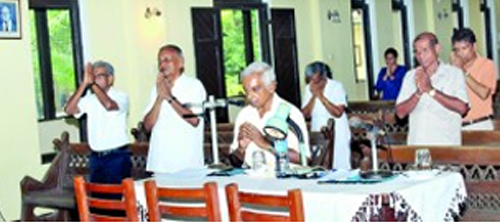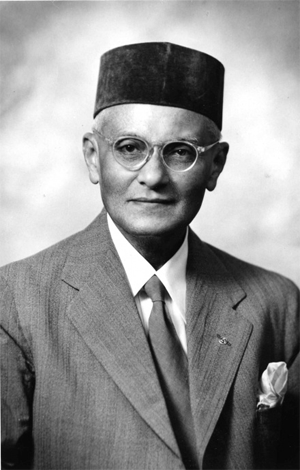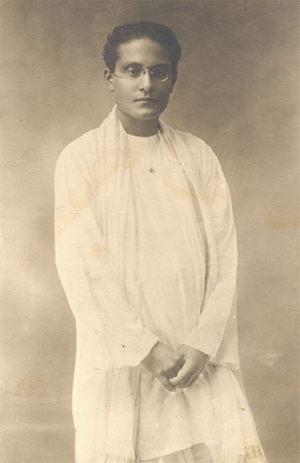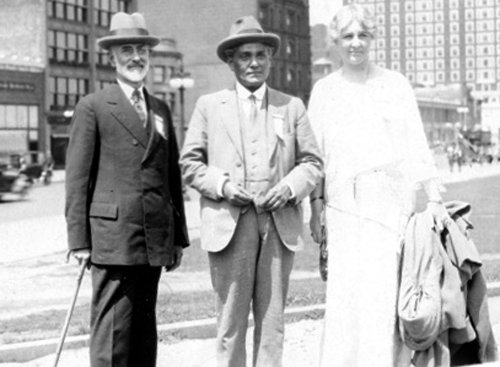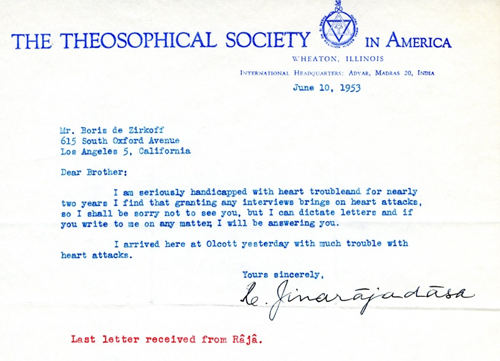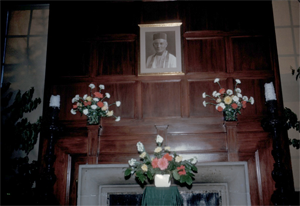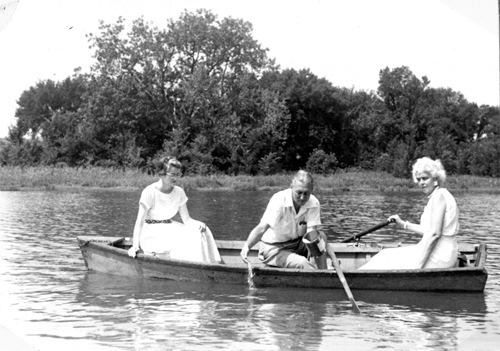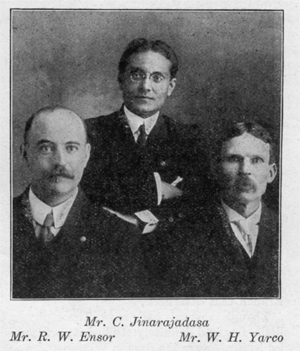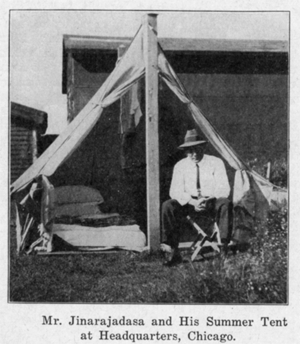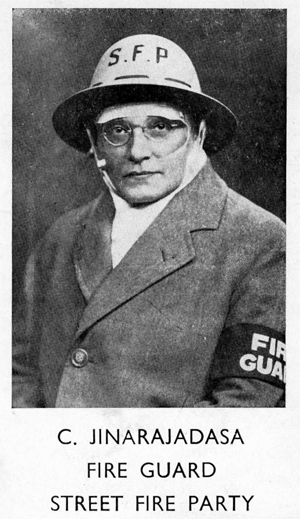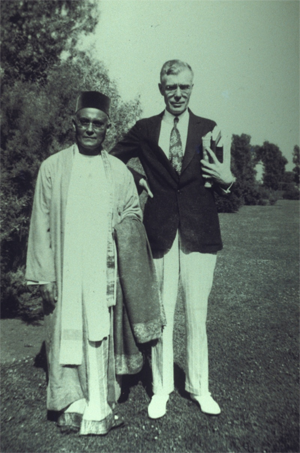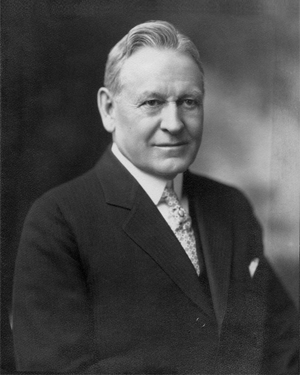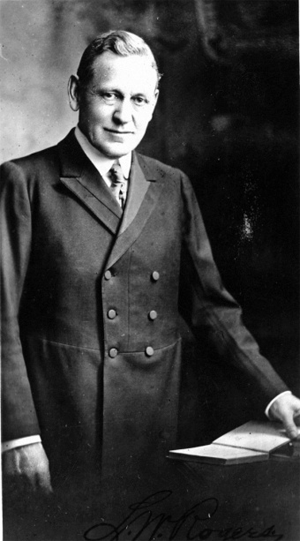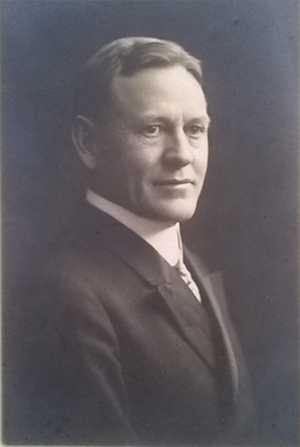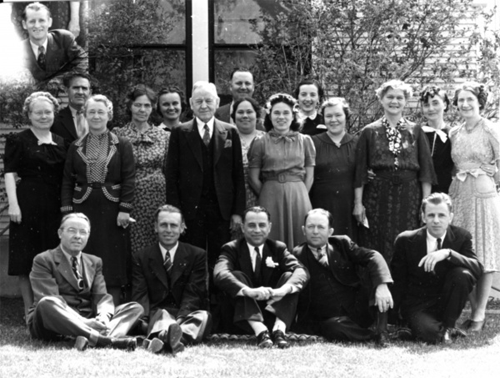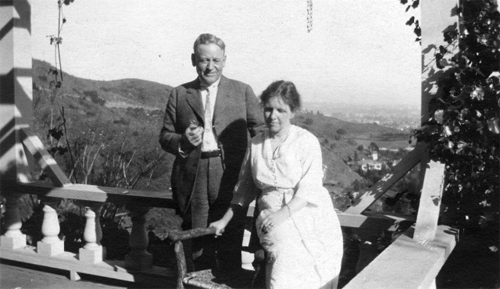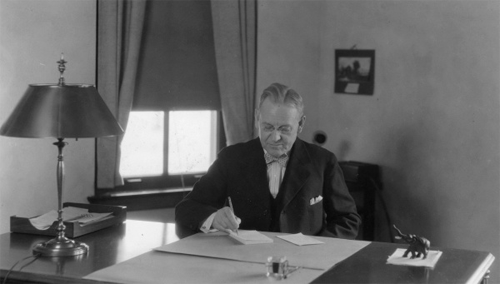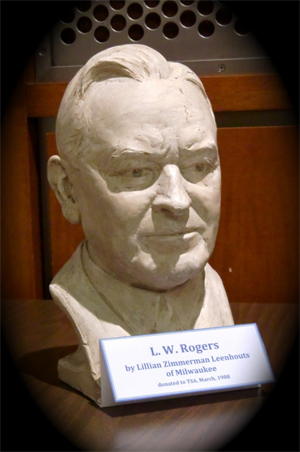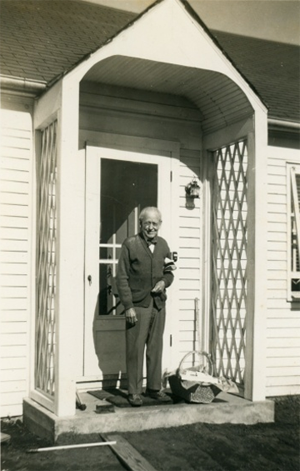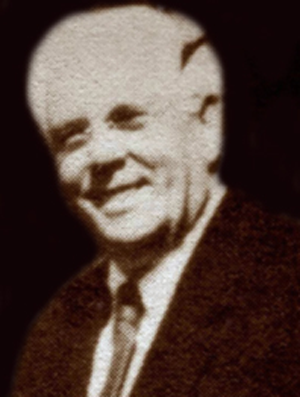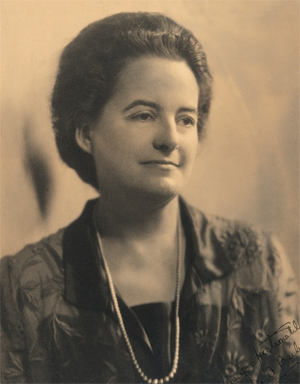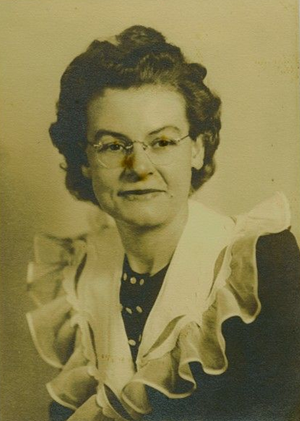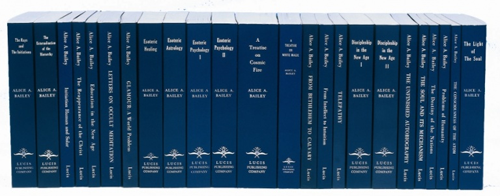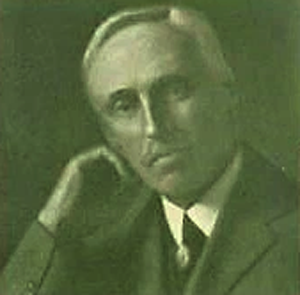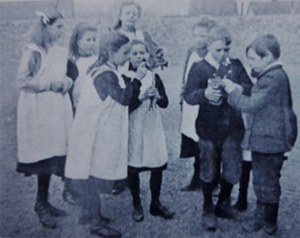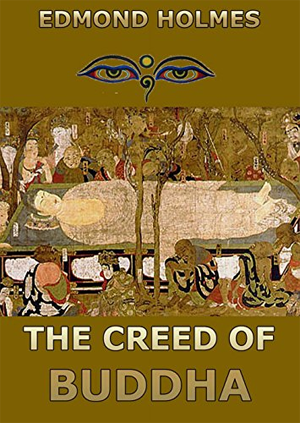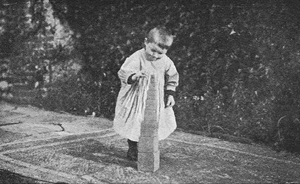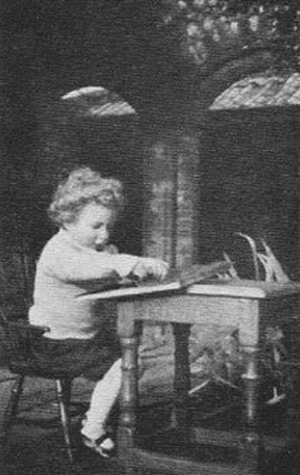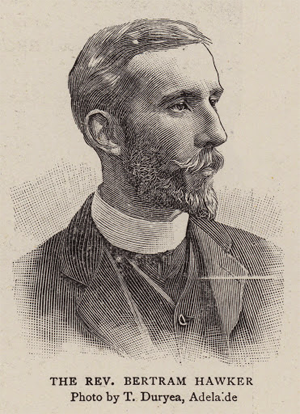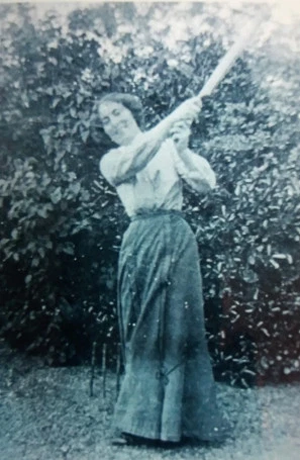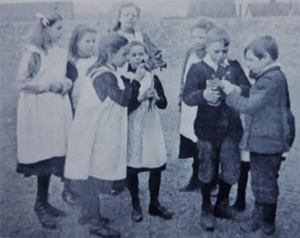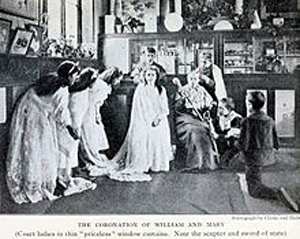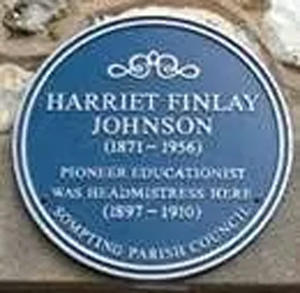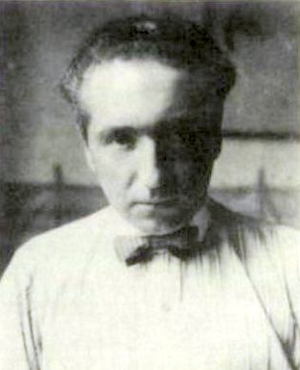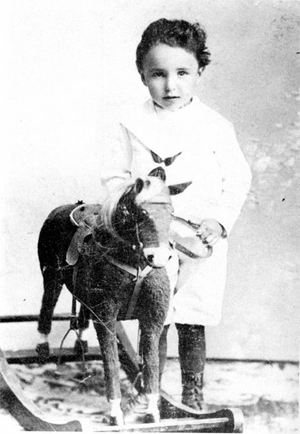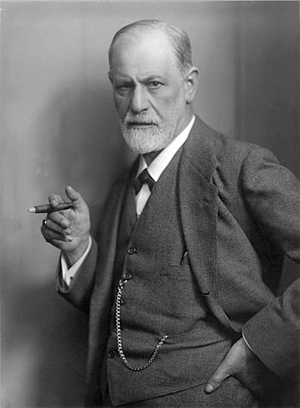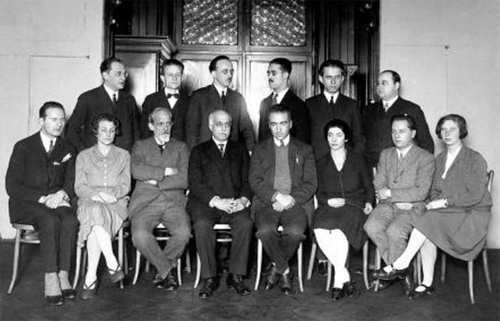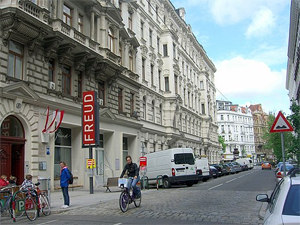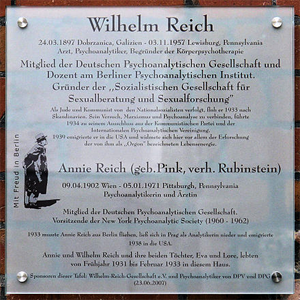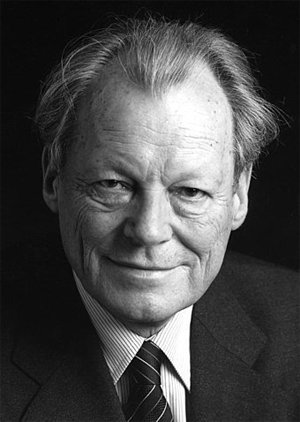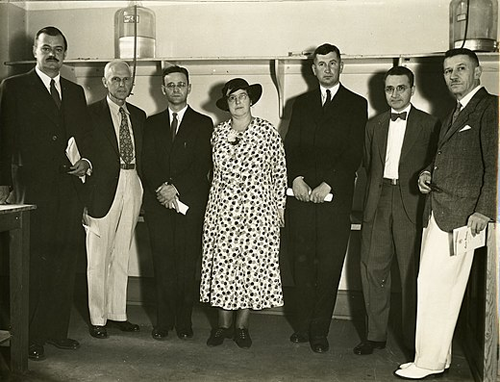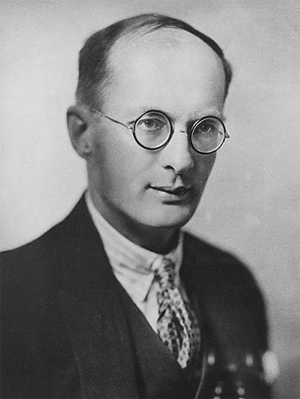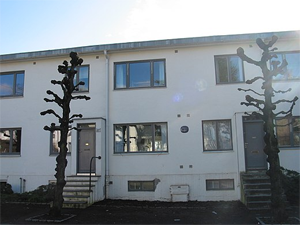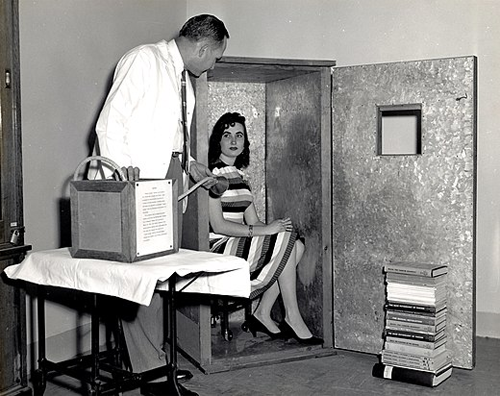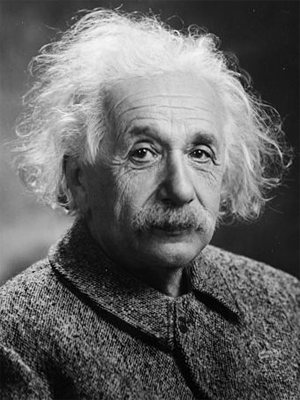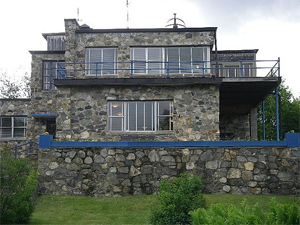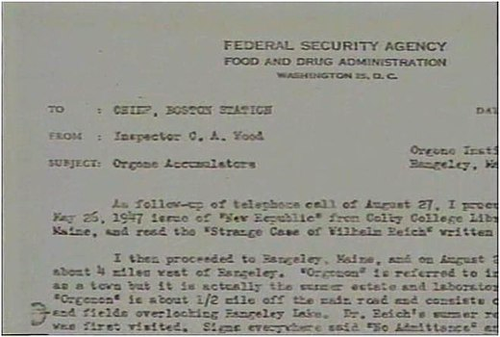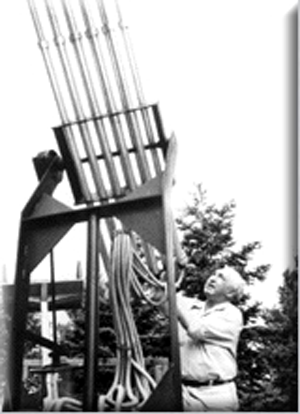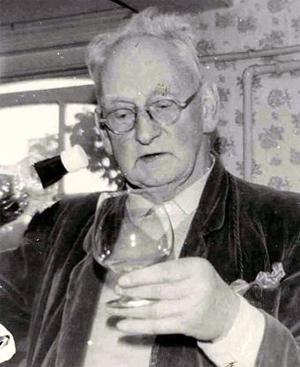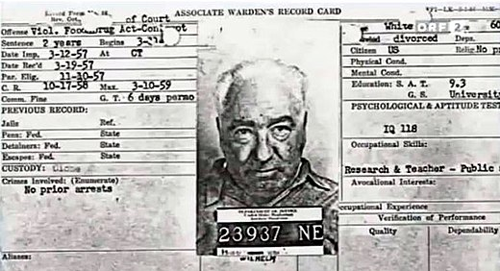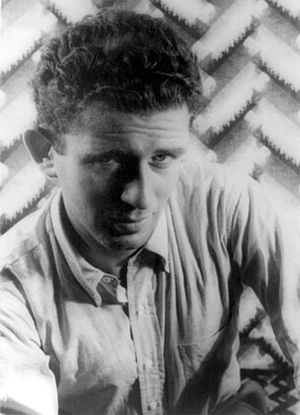by Elizabeth J. Harris
Secretary for Inter-faith Relations for The Methodist Church in London. She holds a doctorate in Buddhist studies from the University of Kelaniya and co-produced the recent BBC series, "The Path of the Buddha".
Collected Wheel Publications, Volume XXVII: Numbers 412-430
by Y. Karunadasa, Susan Elbaum Jootla, John D. Ireland, Ananda W.P. Guruge, Elizabeth J. Harris, Bhikkhu Nyanasobhano, Ashin Ottama, Bhikkhu Nanamoli
1998
NOTICE: THIS WORK MAY BE PROTECTED BY COPYRIGHT
YOU ARE REQUIRED TO READ THE COPYRIGHT NOTICE AT THIS LINK BEFORE YOU READ THE FOLLOWING WORK, THAT IS AVAILABLE SOLELY FOR PRIVATE STUDY, SCHOLARSHIP OR RESEARCH PURSUANT TO 17 U.S.C. SECTION 107 AND 108. IN THE EVENT THAT THE LIBRARY DETERMINES THAT UNLAWFUL COPYING OF THIS WORK HAS OCCURRED, THE LIBRARY HAS THE RIGHT TO BLOCK THE I.P. ADDRESS AT WHICH THE UNLAWFUL COPYING APPEARED TO HAVE OCCURRED. THANK YOU FOR RESPECTING THE RIGHTS OF COPYRIGHT OWNERS.
-- Honour Thy Fathers: A Tribute to the Venerable Kapilavaddho ... And brief History of the Development of Theravāda Buddhism in the UK, by Terry Shine
-- Ananda Metteyya [Charles Henry Allan Bennett]: The First British Emissary of Buddhism [Excerpt], by Elizabeth J. Harris
-- Convert to Compassion: Allan Bennett, from Theravada Buddhism and the British Encounter: Religious, Missionary and Colonial Experience in Nineteenth Century Sri Lanka [Excerpt], by Elizabeth J. Harris
-- Charles Henry Allan Bennett, by Wikipedia
-- Allan Bennett, by AstrumArgenteum.org
--Allan Bennett, by George Knowles
Chapter 1: Ananda Metteyya: A Dedicated Life
His face was the most significant that I have ever seen. Twenty years of physical suffering had twisted and scored it: a lifetime of meditation upon universal love had imparted to it an expression that was unmistakable. His colour was almost dusky, and his eyes had the soft glow of dark amber … Above all, at the moment of meeting and always thereafter, I was conscious of a tender and far-shining emanation, an unvarying psychic sunlight, that environed his personality.1
Clifford Bax, artist and dramatist, wrote these words after meeting Ananda Metteyya in 1918. A sick man incapacitated by asthma for weeks at a time, he was then wearing the clothes of a lay person and had reverted to his civilian name, Allan Bennett. Yet, ten years earlier, as the Venerable Ananda Metteyya, he had led the first Buddhist mission to England from Burma. The Buddhist Society of Great Britain and Ireland had been formed to prepare the way for him.
See e.g. Harris (1998). The Buddhist Society of Great Britain and Ireland (BSGBI) was founded by T. W. Rhys-Davids and others in November 1907 solely in anticipation of Bennett‘s arrival and the BSGBI is similarly regarded as the first of its kind.
-- The First Buddhist Mission to the West: Charles Pfoundes and the London Buddhist mission of 1889 – 1892, by Brian Bocking, University College Cork; Laurence Cox, National University of Ireland Maynooth; and Shin‘ichi Yoshinaga, Maizuru National College of Technology
Bennett, in fact, was the second British person to take on the robes of a Buddhist monk and his influence on Buddhism in Britain in the first decades of the twentieth century was deep.
Even within his own lifetime Allan Bennet
was a controversial figure. In 1894, he joined the Hermetic Order of the Golden Dawn, a society concerned with spiritual growth through esoteric knowledge. He gained a reputation as a magician and a man of mystery, which was not completely shaken off even when he embraced Buddhism several years later. In the early years of the twentieth century, he was much praised by Western Buddhists. Yet, as time passed, he became more and more marginalized as asthma took an ever deepening grip on his life, leading to dependency on drugs. By 1916, his case is described as a “sad” one by The Buddhist Review, published by The Buddhist Society of Great Britain and Ireland. In 1917-18, he managed to give a series of lectures and when he died in 1923, he was the acting Honorary Secretary of The Buddhist Society. Yet, his final years were marked by poverty. Clifford Bax wrote in the conclusion of his 1918 article:
As a Buddhist, he was an alert and powerful personality: as Allan Bennett, a poor man, dwelling unknown in London, he was a sick creature prematurely old. As he was putting on his overcoat, I heard Meena Gunn saying, “Why it’s riddled with moths,” and Bennett responding, “They’re such pretty little things,” and Meena continuing, “Some day we must get you a new one: this coat is too full of holes,” and Bennett answering, shy of his pun, “But, you see, I’m supposed to be a holy man.”2
Bennett was buried without a memorial stone in Morden cemetery. His lifelong friend, Dr. Cassius Pereira, wrote:
And now the worker has, for this life, laid aside his burden. One feels more glad than otherwise, for he was tired; his broken body could no longer keep pace with his soaring mind. The work he began, that of introducing Buddhism to the West, he pushed with enthusiastic vigour in pamphlet, journal and lecture, all masterly, all stimulating thought, all in his own inimitably graceful style. And the results are not disappointing to those who know.3
Allan Bennett was a holy man. His writings reveal sensitivity, conviction, and passionate concern that Buddhism should grow in the West. He combined a poetic imagination, a scientific mind, and a deep concern for justice and peace. He was also able to make the Buddhist path live, not so much through lectures as through the written word. In this study, I seek to make his thought come alive. I look at his life and place him in historical perspective. Then I probe his view of the world and his interpretation of Buddhist doctrine. I show how his thought developed through the trauma of the First World War, and finally I discuss the relevance of his writings today.
Of course, it is impossible to re-create the thought of Ananda Metteyya with authenticity two generations after he died. I rely mainly on what he published in England and Burma, a few personal letters, and the impressions of his contemporaries in Sri Lanka and the West. Furthermore, no biographical writing is objective. It reflects the biographer’s character as much as it portrays the person written about. Allan Bennett, or Ananda Metteyya, will elude any attempt to pin him down. He was a man of his time, born when the British Empire was at the height of its power and the wish to probe new religious pathways was gripping many young minds. Yet, I believe the message he strove to share is still relevant. A probe into his life not only uncovers forgotten history but can give inspiration to the present.
The Search for Truth
In piecing together the biography of Allan Bennett, I am heavily indebted to the writings of two of his closest friends: Aleister Crowley and Dr. Cassius Pereira (later Ven. Kassapa Thera).4 Bennett’s relationship with Crowley was not lifelong. It began when Bennett was more interested in esoteric mysticism than Buddhism and petered out as Crowley sank deeper and deeper into study of the occult. The friendship with Pereira was based on a more solid foundation, that of commitment to Buddhism. They met on Bennett’s first visit to Sri Lanka in 1900 and the relationship continued when Bennett went to Burma. Alec Robertson5 told me that Ven. Kassapa had told him he had had such a close rapport with Bennett that the two could communicate by telepathy. Each knew the other’s thoughts, even at a distance.
Allan Bennett was born in London on the 8th December 1872. His father, a civil and electrical engineer, died when Allan was young. Cassius Pereira claims he was adopted by a Mr. McGregor and kept this name until McGregor died, a fact repeated to me by Ven. Balangoda Ananda Maitreya.6 Yet, it is possible that his mother was still in contact with him, since Crowley refers to him being brought up by his mother as a strict Catholic.7 His education was in Bath after which he trained as an analytical chemist. He was eventually employed by Dr. Bernard Dyer, a public analyst and consulting chemist of international repute who was based in London as an official analyst to the London Corn Trade at the time of Bennett’s association with him.8
Information about Bennett’s early years is sketchy. What is available suggests that he was a sensitive and serious young man who became alienated from Christianity both because it seemed incompatible with science and because he could not square the concept of a God of love with the suffering he saw and experienced. The asthma which plagued him throughout his life seems to have begun in childhood. As a young man, it prevented him from holding down a permanent job. Together with his family circumstances, this meant that he was at times desperately poor. Suffering, therefore, was part of his life from an early stage. Crowley, in fact, wrote of him, “Allan never knew joy; he disdained and distrusted pleasure from the womb.”9
If Bennett distrusted pleasure, he certainly didn’t distrust the search for truth and goodness. This seems to have informed his life from youth. Nineteenth century developments in science gripped him, particularly in the areas of chemistry and electricity, and scientific metaphors permeate his writing. Science meant far more to him than technical knowledge. He linked it with the search for truth about the human being and human consciousness. In his youth particularly, it was intertwined with his religious quest. After rejecting Roman Catholicism, he turned first to Hinduism and Buddhism. In 1890, at the age of eighteen, he read Edwin Arnold’s poem, The Light of Asia. Some say he became a Buddhist at this point but this is doubtful. The poem certainly had a profound influence on him but it was part of a larger exploration which included Hindu literature as well. Both Cassius Pereira and Aleister Crowley refer to him practicing yogic forms of breath control and meditation at this time, a practice closer to Hinduism than to Buddhism. Pereira thought these exercises might have exacerbated his asthma. Crowley refers to him experiencing, at eighteen, Shivadarshana, which Crowley describes as an extraordinarily high state of yogic attainment. “It is a marvel that Allan survived and kept his reason,” Crowley remarked, but he also claimed that Bennett had told him that he wanted to get back to that state.10
In addition, Bennett was also being drawn both into Theosophy and spiritualism, psychology and Western esoteric mysticism. Spiritualism entered Britain in the mid-nineteenth century, based on the conviction that there was a spirit world which could be contacted by clairvoyants. It became linked with interest in alchemy, magical invocations, and esoteric or secret knowledge. Helena Blavatsky, one of the founders of Theosophy, for instance, claimed she was in contact with mahatmas, masters in the spirit world. Significant for Bennett was the creation of the Hermetic Order of the Golden Dawn in 1889 by William Wynn Westcott and Samuel Liddell MacGregor Mathers.11 At first his members were little more than spiritual philosophers, interested in such things as astrology, alchemy, mysticism, and the kabbalah – esoteric practices connected with Judaism. Later, magical rituals were developed and practiced. Bennett joined in 1894. He took the name Iehi Aour, Hebrew for “let there be light,” and rapidly became an important member, respected for his psychic powers.
At this point most of the available information about Bennett comes to us through the eyes of Aleister Crowley, who joined the order in 1898. Crowley’s first impression of him was that he possessed “a tremendous spiritual and magical force.”12 He finds him living in a tiny tenement – “a mean, grim horror”13 – and says of his appearance:
Allan Bennett was tall, but his sickness had already produced a stoop. His head, crowned with a shock of wild, black hair, was intensely noble; the brows, both wide and lofty, overhung indomitable piercing eyes. The face would have been handsome had it not been for the haggardness and pallour due to his almost continuous suffering.
Despite his ill-health, he was a tremendous worker. His knowledge of science, especially electricity, was vast, accurate, and profound. In addition, he had studied the Hindu and Buddhist scriptures, not only as a scholar, but with the insight that comes from inborn sympathetic understanding.
I did not fully realize the colossal stature of that sacred spirit; but I was instantly aware that this man could teach me more in a month than anyone else in five years.14
An unpublished manuscript by Crowley cited by Kenneth Grant adds more:
We called him the White Knight, from Alice in the Looking Glass. So lovable, so harmless, so unpractical! But he was a Knight, too! And White! There never walked a whiter man on earth. He never did walk on earth, either! A genius, a flawless genius. But a most terribly frustrated genius.15
Crowley also claimed that he was known all over London “as the one Magician who could really do big-time stuff,”16 and in two places he recorded an incident when Bennett used a wand to render motionless a sceptic who doubted its power.17
By the year 1899, therefore, Bennett was deeply interested in the religious heritage of the East. He was appreciated as a gentle person who would be loathe to harm anyone. (Crowley was later to write that he was, “the noblest and the gentlest soul that I have ever known.”18) He was widely read and had practiced some forms of meditation, probably using yogic methods of breath control and trance-inducement. He felt an affinity to Buddhism and had been influenced particularly by The Light of Asia. He was also interested in Western esoteric practice and magic and had discovered that he possessed certain psychic powers. Asthma had already made deep inroads into his health. He was knowledgeable about the latest scientific discoveries and optimistic about science’s potential.
In 1900, Bennett travelled to Sri Lanka, the cost of his passage raised by Crowley.19 It was an attempt to save his life. His friends feared he would die unless he was sent to a warmer climate. Crowley also hoped that Bennett would spread Western esoteric lore in the East. He did not. Crowley’s hopes were ironically twisted. Bennett turned away from the emphases of the Order of the Golden Dawn, became a Buddhist monk, and eventually brought Buddhism to the West, convinced that it was Buddhism alone which could meet the religious crisis there.
In Sri Lanka
Bennett spent between one and two years in Sri Lanka. He learnt Pali, developed his meditation practice, and delivered his first sermon on Buddhist doctrine. All the evidence suggests this period was a turning point. His asthma improved. He gave up the cycle of drugs he had found so necessary in England.20 Most of all, he found a focus for his religious quest.
Bennett began by spreading his exploratory net quite wide. According to Cassius Pereira, he went to Kamburugamuwa and studied Pali for six months under an elder Sinhalese monk. But the end of six months, he could converse in it fluently – “Such was the brilliance of his intellect,” Pereira adds.21 Yet, he did not restrict himself to Buddhism. Crowley, who visited him, claimed that he learnt much about the theory and practice of yoga from the Hon. P. Ramanathan, the Solicitor-General of Ceylon, a Tamil gentleman who engaged Bennett as a private tutor for his son. Crowley’s descriptions of Bennett show a person experimenting with different practices. According to Crowley, for instance, Bennett could, with a breathing trick, release leeches from his arm, having purposely fed them.22 He could also enter such a deep state of trance-like meditation through his breathing exercises that his whole body could be upturned without him realizing it.23 Pereira confirms this. He later wrote that Allan had taught him much about meditation at this time. He had thought it was all Buddhist in origin but later realized that it also contained “mystic Christian, Western ‘occult,’ and Hindu sources.” His conclusion was that Bennett’s knowledge was then “vague, wonder seeking, and really only played about the fringe of a truly marvelous avenue for study and practice.”24
So, was Bennett merely a person who selected what he wanted from a variety of sources? The Order of the Golden Dawn certainly did this. Yet in Sri Lanka another process was at work. Bennett gradually came to see that eclectic experimentation with psychic power and the development of iddhi was a mundane accomplishment, divorced from true wisdom or liberation. Theravada Buddhism gained the upper hand. According to Crowley:
Allan had become more and more convinced that he ought to take the Yellow Robe. The phenomena of Dhyana and Samadhi had ceased to exercise their first fascination. It seemed to him that they were insidious obstacles to true spiritual progress; that their occurrence, in reality, broke up the control of the mind which he was trying to establish and prevented him from reaching the ultimate truth which he sought. He had the strength of mind to resist the appeal of even these intense spiritual joys.25
In July 1901, Bennett gave his first Buddhist address before the Hope Lodge of the Theosophical Society, Colombo. His subject was the Four Noble Truths. For the young Cassius Pereira it was a turning point which directed him towards his eventual renunciation.26 Almost certainly, Bennett, by this time, was speaking from the depths of his own conviction that renunciation, as a committed Buddhist, was the only path for him. During his visit Crowley concluded that, in spite of his experimentation, “Allan was already at heart a Buddhist. The more he studied the Tripitika, ‘the three baskets of the law’ … the more he was attracted.”27
Bennett decided to become ordained in Burma. Crowley’s writing suggests that Bennett saw Burma as a place where the Sangha was in a purer state than in Sri Lanka.28 Bennett was disillusioned, for instance, by such practices as “devil dances” …
and the Kandy Perahera.29
Other accounts do not mention Bennett’s reason for leaving Sri Lanka but it is certain that he left realizing that the path of magic, psychic power, and esoteric lore was inadequate. In all his later writings he condemned it.30 The message of the Four Noble Truths became uppermost.
In Burma
On 12th December 1901, Allan Bennett was ordained a novice at Akyab in Arakan, Burma. The name he took was the Venerable Ananda Maitreya. Later he changed the second name to the Pali, Metteyya. At Akyab, he continued his Buddhist studies, supported by Burmese lay people. Pereira and Crowley mention one Dr. Moung Tha Nu, the resident medical officer, as one of these.31 Six months later, on 21st May 1902, he received upasampada, higher ordination, under the Venerable Sheve Bya Sayadaw. Crowley visited Ananda Metteyya in February 1902 and it is again interesting to see through his eyes. He refers to Allan, in robes, as seeming to be “of gigantic height, as compared to the diminutive Burmese” but claims, “The old gentleness was still there.”32
Unfortunately, Crowley also referred to the return of Ananda Metteyya’s asthma. He puts it down to the cold air of the pre-dawn alms rounds and shares a wish that “sanctity was not so incompatible with sanity.”33 As a new monk, Ananda Metteyya would not have wanted to have broken any of the accepted practices.
The next time Crowley visited Burma, Ananda Metteyya was in Rangoon. He went there soon after his higher ordination and stayed in a monastery about two miles from the city. Two interesting points emerge from Crowley’s writing: the suspicion of the British authorities, who imagined political dangers when Europeans “thought Burmese beliefs better than their European equivalents.”34 and the fact that Ananda Metteyya’s health was still not good because of lack of proper medical attention and “his determination to carry out the strict rules of the Order.”35
Yet, it was from Rangoon that Ananda Metteyya began to plan what he had come to see as his life’s mission – bringing Buddhism to the West. The first step was the forming of the Buddhasasana Samagama, an international Buddhist society which aimed at the global consociation of Buddhists. Its first meeting was on 13th march 1903. Ven. Ananda Metteyya took the role of General Secretary. The Honorary Secretary was Dr. E.R. Rost, a Westerner and member of the Indian Medical Service.36 Buddhism - An Illustrated Quarterly Review was launched, edited by Ananda Metteyya, the first volume appearing in September 1903.
The six issues of Buddhism which were published between 1903 and 1908 -- it soon became evident that it could not be a quarterly review -- give much information about Ananda Metteyya's priorities. His vision was missionary and international. The aims of the journal, as set out in the first issue, were:
Firstly, to set before the world the true principles of our Religion, believing, as we do, that these need only to be better known to meet with a wide-spread acceptance among the peoples of the West -- an acceptance which, if manifested in practice, would in our opinion do much to promote the general happiness -- Secondly, to promote, as far as lies in our power, those humanitarian activities referred to in the latter portion of THE FAITH OF THE FUTURE37 and, Thirdly, to unite by our Journal, as by a common bond of mutual interest and brotherhood, the many Associations with Buddhist aims which now exist.38
From Rangoon, Ananda Metteyya maintained a network of international contacts and kept abreast of developments in science, Buddhist scholarship, and politics in Buddhist countries. By 1904, the journal was being sent free to between 500 and 600 libraries in Europe on the condition that each copy be left on the Reading Room table until the next was received. 39. Burmese donations made this possible. The Buddhasasana Samagama gained official representatives in Austria, Burma, Ceylon, China, Germany, Italy, America, and England. The articles published were drawn from scholars worldwide. Ananda Metteyya's comments embraced all his interests, religious, scientific, and political. He could write about the life of philosopher-scientist Herbert Spencer, discoveries concerning the origins of life at the Cavendish Laboratory in Cambridge,40 and research on the dangerous effects of alcohol.41 Since Sri Lanka is also mentioned in every edition of Buddhism, it is obvious that Ananda Metteyya remained in close contact with the country and he went back there at one point. Pereira records that he gave "several inspiring addresses from the Maitriya Hall."42
During these years, two men who eventually became better known than Ananda Metteyya joined him. The first was J.F. McKechnie. Inspired by Ananda Metteyya's article on Nibbana in the first issue of Buddhism, he wrote to him in 1904 to offer his services in business management free. He was accepted. Once in Burma, he learnt Pali and took on far more than business management as his book reviews in the October 1905 issue of Buddhism reveal. By 1908, he was Ven. Silacara. Then, by the beginning of 1905, Ven. Nyanatiloka was also staying with Ananda Metteyya. Nyanatiloka or Anton Gueth was born in 1879 in Wiesbaden, Germany. He was ordained in Burma in 1903, after a period of exhausting travel which had included Sri Lanka. Ananda Metteyya facilitated his return to Sri Lanka to learn Pali,43 a return which sealed the future for Nyanatiloka. He spent almost all his monk's life there, and at his death was given a state funeral.44
The Mission to England
Health continued to elude Ven. Ananda Metteyya. This was one reason why the publication of Buddhism became erratic. Apologies for delays due to illness appear in almost every issue. Yet, his ailment was not serious enough to prevent him from commencing the first Buddhist mission to Britain. Ananda Metteyya had entered the Order “chiefly with the object of eventually forming a Sangha in the West.”45 His life was inspired by the conviction that the West had only to understand the message of Buddhism to embrace it. He was convinced the West was ready. Yet, the first step in this process was not an unqualified success.
Ven. Ananda Metteyya arrived in England on 23rd April 1908 with some of his most faithful supporters, Mrs. Hla Oung, her son, and his wife. He remained until 2nd October of the same year, “the time allotted to the Mission,” according to Christmas Humphreys.46 The Buddhist Society of Great Britain and Ireland, formed in preparation for the mission the previous November, welcomed him eagerly.
See e.g. Harris (1998). The Buddhist Society of Great Britain and Ireland (BSGBI) was founded by T. W. Rhys-Davids and others in November 1907 solely in anticipation of Bennett‘s arrival and the BSGBI is similarly regarded as the first of its kind.
-- The First Buddhist Mission to the West: Charles Pfoundes and the London Buddhist mission of 1889 – 1892, by Brian Bocking, University College Cork; Laurence Cox, National University of Ireland Maynooth; and Shin‘ichi Yoshinaga, Maizuru National College of Technology
Ananda Metteyya himself told a Rangoon paper on his return that he was highly gratified with the visit47 but the response of some of his British supporters was different. Disappointment comes across, for instance, in the account later written by Christmas Humphreys. The positive, according to Humphreys, was this:
He was then thirty-six years of age, tall, slim, graceful, and dignified. The deep-set eyes and somewhat ascetic features, surmounted by the shaven head, made a great impression on all who met him, and all who remember him speaking of his pleasing voice and beautiful enunciation. It seems that his conversation was always interesting; and in his lighter moments he showed a delightful sense of humour, while his deep comprehension of the Dhamma, his fund of analogy from contemporary science, and power and range of thought combined to form a most exceptional personality.48
Humphreys continues to explain that by “correspondence and constant interviews” Ananda Metteyya collected around him a body of scholars who supported the mission and that he “formally admitted into the fold of Buddhism all who wished to be received.” Yet, the negative side of the mission included: the difficulties supporters faced in ensuring Ananda Metteyya could follow the Vinaya rules; the uncomprehending and sometimes ribald laughter leveled at his orange robes in the streets; the uncharismatic nature of Ananda Metteyya’s public speaking style; and his frequent ill-health. Ananda Metteyya was understandably unwilling to compromise when it came to handling money, eating after noon, or sleeping in the same house as a woman. This meant he could not journey alone, his programme had to allow for a meal before noon, and the team needed two houses. For a small group of supporters, this was perhaps more than they had bargained for.49
As for his communication skills, in private conversation, he was probably engaging and impressive. Humphreys declares that “he was popular wherever he went.”50 Yet, in public speaking, he seems to have been self-effacing, avoiding eye contact by keeping his eyes cast down on a prepared script, from which he deviated little. Such an attitude would have been the norm for a monk in Burma, but for those who had enthusiastically hoped for a flowering of Buddhism in Britain, his inability to engage with his audience would have been disappointing, perhaps even embarrassing. The deterioration of his health must also have caused serious concern.
There can be no doubt, however, that the young Buddhist Society was strengthened by Ananda Metteyya’s visit because it attracted enthusiastic scholars. It also sealed a friendship with Burma which was to prove invaluable in terms of financial support in the years ahead. The Buddhist Review, the organ of the newly-formed Buddhist Society, was able to say in 1909 that he left behind him “golden opinions and the friendship and respect of all who had the privilege of meeting him.”51
Years of Crisis
Ven. Ananda Metteyya hoped that he would return to England in two and a half years to establish a permanent Buddhist community in the West.52 This was the next step in his mission plan. The hope died. He remained in Burma until 1914. During 1909, records show that he was still mentioned with much respect at The Buddhist Society in Britain. For instance, he and his colleagues were congratulated for pressing successfully for Buddhism to be taught in schools in Burma.53 The 1911 mission was anticipated. Yet, as time passed, he was mentioned less and less. Ven. Silacara’s name began to arise more often than his in The Buddhist Review. In 1912, Ananda Metteyya appeared in the Minutes as having sent many copies of his book, The Religion of Burma, to the Society as a present54 but when bringing a bhikkhu to England was discussed later in the year55 he was not mentioned. It was Ven. Silacara who was eventually considered.56 By 1914, Ananda Metteyya’s mission was remembered with respect but he was no longer considered a possible future missionary.
One reason for this silence, of course, was his health. According to Cassius Pereira, his health began to fail rapidly on his return to Burma, with gallstone trouble superimposed on his chronic asthma. “He was operated on twice,” Pereira wrote, “and on the urgent advice of his doctors, he reluctantly decided to leave the Order where he had now attained the seniority of Thera or Elder.”57 Pereira did not give a date for this. In 1912 and 1913, The Buddhist Society was still referring to him as Ven. Ananda Metteyya,58 but it is possible that he had already disrobed by this time. In 1914 doctors in Burma pressed him to leave the country if his life was to be saved. His Burmese friends, therefore, sent him to England where he was to meet up with his sister, who had come from America to lead him back to her home in California. A passage from Liverpool was booked but the ship’s doctor refused Bennett permission to board because he feared the American authorities would deny him a landing permit on health grounds. His sister travelled without him. Bennett, now a lay person, was left to the mercy of British well-wishers.
From this point onwards, Allan Bennett’s story was a sad one. A member of the Liverpool Branch of The Buddhist Society, a doctor, took him in and gave him incessant medical care. During the First World War his sister came back from America but she stayed with friends and could not look after her brother. For the doctor’s family, the financial and emotional burden of having a chronically sick, prematurely old person in the house was great. Mrs. Hla Oung, offered 10.00 pounds a year towards maintenance but it was not enough. At this point an anonymous group of well-wishers were forced to write to The Buddhist Review in 1916 appealing for money to save Bennett from being placed “in some institution supported by public charity.”59 His asthma attacks were occurring now more than once a day.
Help did come, from overseas as well as Britain. Yet, Bennett’s final years were far from comfortable. The First World War, which killed a generation of young people in the trenches of France, had a profound effect on him, as it did on many sensitive Westerners. It drove him into deep introspection about the human condition, the sustainability of Western culture, and the contribution of Buddhism. There was also the ever present awareness that his health had prevented him from realizing his hopes for Buddhist outreach in Britain. Yet, the very trauma of the war eventually impelled him into writing and speaking again. In the winter of 1917-18, he was persuaded by Clifford Bax to give a series of papers to a private audience in Bax’s studio. These were later published as “The Wisdom of the Aryas, just two months before his death.
Then, on Vesak Day (May) 1918, Bennett gave to The Buddhist Society what Christmas Humphreys called “a ‘fighting speech’ which aroused the listening members to fresh enthusiasm.”60 It marked a return to active work. He opened by reminding his listeners that it was ten years since his mission to Britain, “the first Buddhist Mission which for over ten centuries had been sent forth from any Buddhist country.” He reported with sadness that the parent body of The Buddhist Society of Great Britain and Ireland, the Buddhasasana Samagama, had completely broken up, and he referred to the war as “the opening of an era of well-nigh universal calamity and woe.”61. He went on to tackle the central question of how the “priceless treasure of the Law” could offer solace, strength, and clear vision even when “it appears that all our world is rocking about us to its fall.” The wider content of his talk I will deal with later. What is important here is that Allan Bennett returned to active work in Britain. He seems to have been helped financially by friends in Britain and Sri Lanka. Cassius Pereira refers to Clifford Bax and Dr. C.A. Hewavitarana as patrons.62
According to one account, Bennett moved to London in 1920.63 Although he was incapacitated for weeks at a time, he took over the editorship of The Buddhist Review from D.B. Jayatilaka, who returned to Sri Lanka. He spoke at meetings organized by the Buddhist Society and became actively involved in the Society’s plans. His conviction that Buddhism offered hope for the West remained unshaken, as his first editorial in 1920 made clear:
These facts, we consider, justify us in our conclusion that in the extension of this great Teaching lies not only the solution of the ever-growing religious problems of the West; but even, perhaps, the only possible deliverance of the western civilization from that condition of fundamental instability which now so obviously and increasingly prevails.64
By 1922, however, Allan Bennett was dying. The January 1922 edition of The Buddhist Review was the last that he edited and indeed the last that was published. Before his death he was reported to have lived at 90 Eccles Road, Clapham Junction. His financial situation was grave, but help continued to come from Dr. Hewavitarana and probably Cassius Pereira. He died on 9th March 1923. A Buddhist funeral service was prepared by Francis Payne, a prominent Buddhist and convert from the 1908 mission, who was present when he died. Dr. Hewavitarana cabled money from Sri Lanka to buy a grave in Morden Cemetery in South London. Humphreys wrote that “flowers and incense were placed on the grave by members of the large gathering assembled, and so there passed from human sight a man whom history may some time honour for bringing to England as a living faith the Message of the All-Enlightened One.”65
Travers Christmas Humphreys, QC (15 February 1901 – 13 April 1983) was an English barrister who prosecuted several controversial cases in the 1940s and 1950s, and later became a judge at the Old Bailey. He also wrote a number of works on Mahayana Buddhism and in his day was the best-known British convert to Buddhism. In 1924 he founded what became the London Buddhist Society, which was to have a seminal influence on the growth of the Buddhist tradition in Britain.
-- Christmas Humphreys, by Wikipedia
No gravestone has ever been placed on Allan Bennett’s grave. This could have been due to suspicions which continued to surround his name after his death. For instance, Bennett never completely outlived his reputation as a magician and a member of the Order of the Golden Dawn. The young Buddhist Society was keen to dissociate itself from anything esoteric. Allan Bennett’s involvement as a young man with a movement which was controversial and his early friendship with Aleister Crowley, by then a known occultist, would have been cause enough for suspicion. It is significant that several articles during his lifetime took pains to stress that he was not a man of “mystery”, that he had rejected that part of his past. “It is necessary to say this, since some attempts have been made to surround him with mystery. There is no more mystery attending the Bhikkhu Ananda Metteyya than any other person,” an editorial of The Buddhist Review stated in 1909.66 Clifford Bax said something similar in 1918: “At first glance I realized that he never could have played at being a man of mystery.”67
Ven. Ananda Metteyya rejected the path of “mystery” as a hindrance to the goal. It was not “mystery” and magic which taxed his mind but two quite different aspects of life: the search for truth and the pain within human existence. He brought the sensitivity of the poet and the mind of the scientist to this. Yet, he occasionally shared a conviction that there was a power, an energy, which moved to goo and which could be used by humans on their way to liberation. This could mistakenly have struck some Western Buddhists as touching the theism they had rejected. As for his friendship with Aleister Crowley, it ended as Ananda Metteyya travelled further and further from the path Crowley chose. His influence on Crowley was great but ultimately Crowley chose to reject it.
Another reason for suspicion might have been his illness. Throughout his life, he was reliant on dependency-creating drugs such as cocaine, opium, and morphine, no doubt first prescribed by a doctor, although by the end of his life some of the dangers were known and new remedies were being tried. The consequence, however, could have been times of hallucination, giving the appearance of the “mystery” with which some linked him. The truth is that it was an injustice to a person who, in his writing, communicated the message of the Buddha with a poetic sensitivity and a scientific directness which still speaks to us today.
_______________
Notes:
1. Clifford Bax, “Ananda Metteyya” in The Middle Way, Vol. 43:1, May 1968, p. 23.
2. Ibid., p. 27.
3. The Buddhist, 28th April 1923, p. 6.
4. Dr. Cassius Pereira was a prominent Sri Lankan Buddhist. Together with Ven. Narada, Dr. W.A. de Silva, and Hema Basnayake, in 1921 he founded the Servants of the Buddha, an organization which provided a forum for English-speaking Buddhists to discuss the Dhamma. At the age of 65 he was ordained with the monastic name Kassapa, receiving both novice ordination and higher ordination on the same day. Throughout his life, he was an influential exponent of Theravada Buddhism in Sri Lanka, stressing its rationality. His father built Maitriya Hall (Lauries Road, Bambalapitiya), which was named after Ananda Metteyya.
It is early Saturday evening and the Galle Road at Bambalapitiya is a comfortable cacophony of weekend activity but a turn into Lauries’ Road, finds the Mettaramaya; an escape from the noisy sights and sounds. The temple this evening is a peaceful hum of activity as a few individuals make their way past the stupa to the back, where stands a chapel- a building one would hardly expect to see in a temple.
If such a sight caused surprise in the mind of the casual observer, it clearly didn’t bother the men and women who removed their shoes at the entrance and stepped inside; a practice that has been taking place for close to a century as they prepared for the weekly meeting of the society of ‘The Servants of the Buddha’.
“In my personal view it goes to real Buddhist philosophy,” explains Mrs. Jayakuru who had joined the society in the early 90s. More of a forum rather than a typical “bana” or sermon, meetings take place every Saturday at 4.30 p.m. “We go through the minutes of the previous session and then meditate for about five minutes,” clarifies Dr. Kosala De Silva, President of the society. A guest speaker either from the clergy and laity conducts the session. For the members, it is comprehensive and allows them to question the Dhamma and share their views and opinions- all in English.
With a history that has witnessed many events such as birth of the country’s independence and two world wars, the walls of the Maitri Hall, as the chapel is known have always provided its visitors with a spiritual escape while offering them the freedom and liberty to examine Buddhism from a layman’s point of view.
Established almost 40 years after the acclaimed publication “The Light of Asia” by Sir Edwin Arnold, KCIE CSI, the study of Buddhism in English built a bridge between the East, the West and Buddhism. With interest in the doctrine spreading across America and Europe over the next few decades, an Englishman -- Allan Bennett was ordained as a Bhikkhu in Ceylon, believed to have been only the second Englishman to take the robes. As Ven. Ananda Metteyya, he had a vision of teaching the Dhamma in English especially in Anglicised schools as Buddhism was not part of the school curriculum at that point.
Having heard Ven. Ananda give a sermon, Dr. Cassius A. Pereira, LMS (Cey), LRCP (Lond) embraced Buddhism. Ordained as Bhikkhu Kassyapa of the Vajiraramaya Temple, he worked diligently toward the spread of the Dhamma and together with Ven. Rambukwelle Siddhartha Thera, Ven Narada Maha Swaminwahanse and a few others formed the Servants of the Buddha Society in 1921, becoming its first president.
Since its inception the society has attracted the clergy and laity, scholars and even those of different faiths.
Over the years little has changed within the society. The medium of communication remains English. In fact the Servants of the Buddha is believed to be one of the only Buddhist societies in Sri Lanka to conduct their meetings exclusively in English. While introducing Buddhism to schools was a primary objective, Dr. De Silva believes that conducting sessions in English may have been done to create a sense of familiarity among English speaking Colombo of the colonial ’20s.
Another, if not the most atypical feature of the society is in the hall itself. The Maitri Hall located at the back of the Mettaramaya with long open doors familiar to a classical church building, has a chapel-like atmosphere, complete with a high ceiling, pews and even an altar. Softly lit, one feels quite at home seated in one of the pews, feet touching the cold cement floor. The building is rustic and simple. A small vestry of sorts adjoins the hall, where two cupboards make up the humble ‘library’ with books dating back to the last century. “The building itself captures attention,” adds a member, and yes, it is in need of repair.
For Dr. De Silva little has changed since he can remember. Although he joined only about three and a half years ago the Servants of the Buddha is a society linked to him from his childhood. “My father used to come for meetings, even from Panadura,” he reminisces. Having attended Dhamma school as a child, his father’s spiritual influence was deeply rooted within young Kosala, who would later on become a keynote speaker at many a meeting, before becoming a member, and more recently the society’s president.
Mrs. Jayakuru joined the society during her late husband‘s period as President. “We have a lot of professionals -- lawyers, doctors, engineers, even naval officers,” she explains, as to the diverse group of people who make their way to the Maitri Hall with a thirst of knowledge and maybe even inner peace.
Retired teacher Badra Yatamagamuwa who has been attending meetings for the past 30 years still doesn’t call herself a member per se. She comes for the opportunity to listen and learn, she says, and some speakers go “straight to the heart”.
The weekly meetings attract around 20 to 25 people, while they do see bigger crowds especially young people coming in on Vesak poya day.
On the last Saturday in July when the Sunday Times dropped in, the meeting was devoted to one and a half hours of meditation. Not everyone was able to remain in full concentration, and some waited till the end to ask questions and discuss their own doubts with Prof. Rajah De Alwis, the guest speaker for the day. All in an atmosphere of calm that seems to characterise the society.
-- A Spiritual Escape, by Pumima Pilapitiya, The Sunday Times
5. Alec Robertson, a prominent exponent of Buddhism, has been linked with the Servants of the Buddha since 1948, since 1970 as its President. He was a close associate of Dr. Cassius Pereira.
6. Ven. Balangoda Ananda Maitreya Thera was born in 1896 and entered the Bhikkhu Sangha in 1911, gaining higher ordination in 1916. During his life, he has earned international renown as a scholar and spiritual leader. Still alive and in good health at the time this publication goes to press (1998), he was one of the few people I met during my research having first-hand memories of Ananda Metteyya’s era.
7. The Confessions of Aleister Crowley: An Autohagiography, eds. John Symonds & Kenneth Grant (Penguin (Arkana), Harmondsworth, U.K., 1989), p. 180.
8. Kenneth Grant, The Magical Revival (Frederick Muller Ltd., London, 1972), p. 82n.
9. Confessions, p. 234.
10. The Magical Revival, p. 85.
11. See R.A. Gilbert, The Golden Dawn: Twilight of the Magicians. A Concise history, drawing on new material from privately printed and manuscript sources, of the Hermetic Order of the Golden Dawn (The Aquarian Press, Wellingborough, UK, 1983); Ellic Howe, The Magicians of the Golden Dawn: A Documentary History of a Magical Order (The Aquarian Press, Wellingborough, UK, 1972); Kenneth Grant, The Magical Revival.
12. Confessions, p. 178.
13. Ibid., p. 179.
14. Ibid., p. 181.
15. The Magical Revival, p. 82.
16. Ibid., p. 85.
17. See Confessions, p. 180; The Magical Revival, p. 85.
18. Confessions, p. 234.
19. Ibid., pp. 181-82.
20. In the late 1880s, the remedies prescribed by doctors for asthma included cocaine, opium, and morphine. Bennett was heavily dependent on them in Britain. See Confessions, p. 180; James Adam, Asthma and its Radical Treatment (Henry Kimpton, London, 1913), which advises the use of cocaine and, with restrictions, morphine; A.C. Wootton, Chronicles of Pharmacy (MacMillan & Co. Ltd., London, 1910), which affirms the beneficial effects of laudanum, an opium-based drug, in a variety of ailments; John C. Thorowgood, Asthma and Chronic Bronchitis (Bailliere Tindall and Cox, London, 1894), which recommends arsenical cigarettes, cocaine, cannabis, and morphine together with less toxic drugs.
21. The Buddhist, 28th April 1923, p. 6.
22. Confessions, p. 247.
23. Ibid., p. 246.
24. Dr. Cassius A. Pereira, “Why do I renounce the World?” Ceylon Daily News, Vesak Number 2491 (1947), (Colombo, Sri Lanka), p. 67.
25. Confessions, p. 249.
26. See “Why do I renounce the World?”, p. 67.
27. Confessions, p. 237.
28. Ibid., p. 237.
29. Ibid., p. 250.
30. See Buddhism, Vol. 1:4, pp. 677-68, where Ananda Metteyya justifies representation of the first International Freethought Conference because Buddhism is opposed to all supernaturalism; Buddhism (Vol. 1:1), p. 27, where Buddhism is divorced from the esoteric.
31. See The Buddhist, 28th April 1923, p. 6; Confessions, p. 271.
32. Confessions, p. 270.
33. Ibid., p. 271.
34. Ibid., p. 462.
35. Ibid., p. 464.
36. For further information about Rost see Christmas Humphreys Sixty Years of Buddhism in England (1907-1967) (The Buddhist Society, London, 1968).
37. "The Faith of the Future" mentions arbitration instead of warfare; equality between the sexes; humane treatment of criminals.
38. Buddhism: An Illustrated Quarterly Review, Vol. 1:1, pp. 63-64.
39. Ibid. Vol. 1:3, p. 473.
40. Ibid. Vol. 1:3, pp. 503ff.; Vol. 2:1, p. 119.
41. Ibid., Vol. 1:3, p. 515.
42. The Buddhist, 28th April 1923, p. 6.
43. Unpublished letter from Ven. Ananda Metteyya to Dr. Cassius Pereira (Forest Hermitage, Kandy, Sri Lanka).
44. William Peiris, The Western Contribution to Buddhism (Motilal Barnasidass, Delhi, 1973), p. 139.
45. The Buddhist Review, Vol. 9, 1917, p. 184.
46. Humphreys, Sixty Years of Buddhism in England, p. 7. It is unlikely that Ananda Metteyya came to England intending to stay on permanently and that failure sent him back to Burma. More probably, his visit was intended to begin a process that would eventually produce an indigenous monastic Sangha in the West.
47. Ibid., p. 7.
48. Ibid., p. 6.
49. See also Sandra Bell, “British Buddhism and the Negotiation of Tradition,” paper given at a symposium on “The Invention and Re-Invention of Tradition” held at St. Mary’s College, 22-24 September 1994. Bell writes, “Those middle classes and upper class late Victorian Londoners who chose to support the activities of Ananda Metteyya were, despite his British origins, faced with alien forms of behavior to which they had difficulty in adapting.”
50. Christmas Humphreys, “Ananda Metteyya,” in The Middle Way, Vol. 47, 1972, p. 133.
51. The Buddhist Review, Vol. 1, 1909, p. 3
52. Ibid., p. 3.
53. Minute Book, December 3rd, 1909 (The Buddhist Society, London).
54. Ibid., April 4th, 1912.
55. Ibid., November 1st, 1912.
56. Ibid., December 23rd, 1914.
57. The Buddhist, 28th April 1923, p. 6.
58. See Minute Book, April 30th, 1912; March 14th, 1913; December 9ths, 1913 (The Buddhist Society, London).
59. The Buddhist Review, Vol. 8, 1916, pp. 217-19.
60. Humphreys, Sixty Years, p. 14.
61. The Buddhist Review, Vol. 9, p. 141.
62. The Buddhist, 28th April 1923, p. 6
63. Kenneth Mullen, “Ananda Metteyya: Buddhist Pioneer” in The Middle Way, Vol. 64, 1989.
64. The Buddhist Review, Vol. 10, pp. 186-87.
65. Humphreys, Sixty Years, pp. 16-17.
66. The Buddhist Review, Vol. 1, 1909, p. 3.
67. Clifford Bax, “Ananda Metteyya” in The Middle Way, Vol. 43:1, p. 23.


